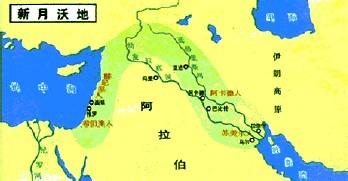在人们的逻辑思维中,肯定与否定是两个截然相反的概念。无论对讲哪一种语言的人来说,这都是共同的。一般来说,不论叙述一件事情,提出一项要求,还是回答一个问题,不是用肯定语气,就是用否定语气来表达意思。句子的否定结构是语言中的一个很重要而且应用很广泛的范畴,它是用来否认一个事实的成立、存在或真实性的。但是因语言而异,英语中表达这一概念的手段与方式却比其他任何语法范畴要复杂得多。英语中否定句通常借助否定词no,not,never,nothing,nobody,none等,半否定词hardly,scarcely,few,little等,以及否定词缀构成。然而由于英语中有的词语习惯上只能用于肯定句中,有些只能用于否定句中;还有些用于肯定句中的词语,用于否定句中时却只能用它们相对应的同根词;还有些词语,同样是这个词,在肯定句中同在否定句中意义不一样;此外还有不少习惯上不合理的用法。这种形式与意义之间所出现的不协调的现象,虽然使枯燥的语言变得丰富多彩,绚丽多姿,却同时也给学习者带来了不少困难。因此对各种否定结构下番功夫,对于正确使用英语会有相当的帮助。
部分否定_否定 -名称

否定
部分否定_否定 -相关信息
否定fǒudìng
【negate;negative】∶暗示两个相互排斥的事物的一方为另一方所取消或废除
否定之否定
那个理论已被事实所否定
【repudiate;deny;refute】∶拒绝承认
大家在理论上否定但实际上承认的一条规律
部分否定_否定 -英语否定
否定的表达方式
1 前缀和后缀(Prefixes and suffixes)
增添词缀,即前缀或后缀,使原来的词由肯定意义化为否定意义。常用的否定前缀有ab- / dis- / il- / ill- / im- / in- / ir- / mis- / non- / un-等,否定后缀有-less / -free等,例如:
--It is abnormal for him to walk in his sleep. (梦游症)
--This will disqualify (使…没有资格) him from taking part in the game.
--The ship wasleaky(漏) and very much disabled.
--Your remark is ill-timed.
--Every word he said was impossible of belief.
--The new evidence has completely invalidated(使…站不住脚)his theory.
--To be afraid of the number 13 isirrational.
--He bore (忍受) his misfortunes bravely.
--On the sea there were fleets ofnondescriptships―converted yachts, riverboats, tugs and barges. (在海上有成批的无法归类的船只――改装的游艇、河里的小船、拖船和驳船。)
--Such criticism ismeaningless.
--The cause of the accident remains unknown to us.
--Water is incompatible (不相容)with fire.
--She is getting impatient.
--The method of working isuseless.
--She is reckless of consequence. (她是不顾后果的。)
--She dislikes being spoken to like this.
--The sea is ice-free.
--He bought two bottles of wine at the duty-free (免税) shop.
上述否定词缀一般都表示否定,但是有时有些否定词缀(前缀,后缀)并不表示否定。例如:
--Thank you for your invaluable (宝贵的) help.
--That nurse was indifferent (冷漠) to the sufferings of the patients.
--Oil is inflammable. (油容易燃烧。)
--Something seems to have unloosed her tongue.(不知什么事情使她说个没完。)
--Styles come and go, but good taste is timeless.(风格随时在变,而风雅是永恒的。)
--He’s ashameless(无耻) liar.
--Works of art, historical monuments andpricelesshistory records were ruthlessly destroyed. (艺术品、历史上遗留下来的纪念品以及珍贵的历史文献惨遭破坏。)
2 副词和介词(Adverbs and Prepositions)
a. 副词
有些副词本身形式上是肯定,但是具有否定的性质,因此不要再用否定词去加强这类词。如:hardly, seldom,scarcely, rarely, little等。这些词一旦出现,则表示整个句子的意思接近完全否定,称之为几乎否定。
副词hardly和scarcely的意思等同于almost not或almost no。例如:
--They scarcely/hardly seem to care.
--It is hardly/scarcely right.
--Hardly anyone wants the job. (Quirk.)
--I canbarelyspeak to any of my colleagues.
注意:hardly/scarcely和not 一样,可以与不定惯词a,不定代词any以及副词yet和ever等搭配。例如:
--They hardly have any friends.
--He hardly ever leaves his office before twelve o’clock.
--He had hardly a penny left.
--They can hardly have got there yet.
要否定某件事时,使用包括否定词not (或n’t),no, nothing, nowhere等的否定句。句子中否定词后面的部分叫否定范围。这部分就是需要否定的内容。否定范围可以包括,也可以不包括句尾的状语。例如:
--He definitely hasn’t taken the job. (It’s definite that he hasn’t)句中definitely一词在否定范围以外。
--He hasn’t definitely taken the job. (It’s not definitely that he has)句中的definitely则在否定范围以内。
--They weren’t at home/for the whole day.
--(For the whole day, they weren’t at home.)
--They weren’t at home for the whole day.
--(It’s not true that they were at home for the whole day.)
在否定范围内要使用any型词,如any, yet和ever, anyone, anything, anywhere, at all, either。但在否定词后也可以使用some型词。如some, already, sometimes, somebody, something, somewhere, some-time, already, somewhat, somehow, too (表增加的副词),但这些词在否定范围之外。因此在否定范围之内的any型词与在否定范围之外的some型词所表达的意思是不同的。例如:
--I didn’t attend any of the lectures (I attended none of the lectures).
--We haven’t had dinner yet.
--I didn’t attend some of the lectures (There were some lectures that I didn’t attend).
否定词的一般作用就是使带否定词的句子变成否定。这就意味着带not的否定句的某些特点,也适用于其他否定词:
1)否定词后面一般不用some类词而用any类词,这是由some类词和any类词的语法特征所决定的。some一般用于肯定陈述句,any一般用于yes-no问句和否定词后面。例如:
--I seldom get any sleep after the baby wakes up.
--I’ve spoken to hardly anyone who disagrees with me on this point.
否定词在句首时,主语和功能词位置要颠倒,也就是说,语序是功能词 + 主语(除非否定词包括在主语之内)。
在否定句中,any类词不只跟在not或n’t后面,也跟在nobody,no, scarcely等其他否定词后面。
Hardly/scarcely与不定代词anybody, anyone, anything并列在一起,相当于almost not a 或almost not one 的意思。
--Hardly/Scarcely anybody believes that.
--I hardly/scarcely saw anything.
副词seldom和rarely是not often 的意思。例如:
--I seldom get any sleep.
--Living as they do in a remote (偏远的) village, they rarely have visitors.
副词little是not much 的意思,一般修饰形容词和动词。例如:
--He is little known around here.
--I saw little of her last year. (去年我很少见到她。)
2)never为否定词,only在某种程度上也是一个否定词。当only强调表示主语的名词词组时,可与any连用。例如:
--I have never seen such a device.
--I never said such a thing.
--Only two of us had any experience in sailing.
注意:never在句中的位置和not相同,但如果never的位置放置不同,句意就不同。例如:
--He never intended to use the method. (他从来没想使用这种方法。)
--He intended never to use the method.(他想从此不再使用这种方法了。)
以上1)和2)中的否定或有否定含义的副词时常放在陈述句首,以表示强调,而其后所用的词序用倒装语序。
--Rarely does crime pay so well as many people think.
--Scarcely ever has the British nation suffered so much.
--Little did I expect such enthusiasm from so many. (Crowell)
Only强调的句首部分不是主语部分时,其后所用的词序有时可用倒装,也可以不用倒装。例如:
--Only his mother will he obey.
比较:
--Only his mother he will obey. =It’s only his mother that he will obey. (Quirk)
--Only on Sundays do they eat with their children. (only修饰状语on Sundays)
3)可以用来表示否定意义的副词还有down, off, otherwise, out,vainly等。例如:
--He is down in health. (他身体欠佳。)
--We have the afternoon off on Saturdays. (我们星期六下午不工作。)
--I think it will rain this afternoon, but my brother thinks otherwise.(我认为今天下午会下雨,但是我弟弟不这样想。)
--He stood still, trying vainly to answer my question.(他愣愣的站着,回答不出我的问题。)
--The Labour Party was out (of power). (工党不掌权了。)
b. 介词
有一部分介词可使用在排除否定句中,即:一个句子里有二个部分:一部分肯定,另一部分被否定;反过来也是这样,这种否定句称为排除否定句。例如:
--We all went but him.此句中被否定的是“他”。
--We all did not go but him.此句中的“他”处于谓语动作的否定之外。这两句都属于排除否定句。
but 是介词,表示“除……外”。相当于but的还有except,excepting,barring, except for, with the exception of, but for等。例如:
--He could answer all the questions but one.
--There was nothing in the desk but a few pencils.
--Nobody knew it but me.
--It snowed everywhere yesterday but in the South.
--Who but he would do such a thing?
--All the items were discussed exclusive of (除……外) the last two.
--They passed with the exception of (除……之外) three.
--The meeting will be held next Tuesday barring unforeseen factors (如无意外情况).
--I looked everywhere except there.
--He desired nothing except (to) see cherry trees.
--I looked for the book everywhere except in the laboratory (实验室).
--The screen was all dark save for (除了) one bright spot.
注意:but作介词时相当于except (除……之外)。主要用在all, no- body, nothing, who, where…… 等之后(参见以上例句)。except; except for和but for三者意思不一样,用法也不一样。
except 作“除……之外”解,表示被排除的人或事与句中列举的人或事物属于同一种类。例如:
--We all succeeded except Xiao Li.
except for 作“除……外,只是……”解,表示被排除的人或物不属同一类。句子说明基本情况后,由except for引出的人或物对基本状况作表异议的补充说明。例如:
--The hall is empty except for a man on duty.
but for 作“要不是……”解,相当于一个条件状语结构。例如:
--But for air and water, nothing could live.
有些介词,暗含否定性概念,这类介词有above, beneath, beyond, from, again, behind, below, without, beside, besides, but, inside, out-side, over, under, off, past等。例如:
--To be vain of one’s rank or place is to show that one is below it.(凡因自己的地位而觉得了不起的人,就表明他不配有这样的地位。)
--He is above playing tricks on others. (他不至于捉弄他人。)
--Almost everything was against him.
--That’s all beside the point (不关正题).
--He is anything but (决不是) a scholar.
--This year’s copy contains innovations over those in the past.(今年的版本花样不同于过去。)
--They are under ten years of age (不满10岁).
--To my mind, his integrity is above suspicion.(在我看来,他的廉洁是不容置疑的。)
--The book is above me. (这本书我读不懂。)
--This kind of thing is beneath attention (不值得注意).
--The scene after the earthquake was beyond description.
--She only just refrained (克制) from giving a cry.
--Everyone was invited to the party besides me (除我之外).
--We have been without rain for a long time.
--The book are off (=no longer on) theshelves.
--Our car broke down again inside a mile (不到一英里).
--She is off duty now.
--The pain was past bearing (无法忍受).
--That’s outside my interests.
注意:介词without作“没有”解,多半作条件状语用,也可作行为方式状语或定语。例如:
--We can do nothing without energy. (条件状语)
--He did the experiment without difficulty. (行为方式状语)
--This will be a new-type automobile without any wheel.
--instead of 作“而不是”解,可以做介词,也可以作连词。例如:
--Instead of giving me an apple, she gave me a pear.
--The child was walking in the street, instead of on the sidewalk (人行道),but right next to the curb (路边). (连词)
--This is dull instead of interesting. (连词)
3 短语(Phrases)
英语否定句通常的表现形式是在肯定句中插入否定意义的词或使用带有否定前缀的词,还可以通过短语如:动词短语,名词短语形容词短语,副词短语,介词短语,以及连词短语表示。这种通过词汇手段表现的否定句,在形式上是肯定的,但意义上却是否定的,这类句子通常称为含蓄否定句(Implied negative sentences).这类含蓄否定,不仅用短语表示,27.1.2中的副词和介词也是如此。
a. 动词短语
这类短语有:fall/run short (of) (缺乏),free from, keep from, keep off, lose sight of, protect from, refrain from, save from, turn a deaf ear, make light of, warn against, prevent from等。例如:
--We have run short of rubber and wood again.
--He falls short in a number of respects in punctuality, in courtesy, and in attention to his work.
(他在守时、礼貌和专心工作等几方面都有不足之处。)
--It is a day that frees from wind (无风).
--He kept the matter from everybody’s knowledge.
--The antibiotics (抗生素) have protected millions of people from being killed by bacteria (细菌).
--He saved the boy from drowning (淹死).
--He turned a deaf ear to my advice.
--He makes light of everything. (他把什么都不当一回事。)
--He warned me against smoking in the library.
b. 形容词短语
可以用来表示否定意义的形容词短语有:far from, far cry from (与……完全不同),free from, free ,of, safe from, short of, independent of, absent from, devoid of (没有), ignorant of (不知道), innocent of (没有), the last等。例如:
--The work is far from (being) completed.
--What he said is far cry from what he did.
--He is free from care (忧虑).
--The village is said to be free of thieves.
--Now we are quite safe from the forest fire.(现在我们不会受森林大火的祸害了。)
--They are independent of their parents.
--Some of the students were absent from class yesterday.
--She seems devoid of common sense.
--I was ignorant of the fact.
--The windows are innocent of glass.
--The last person I want to see is Jeff. (杰夫是我最不想见到的人。)
--He is the last man to accept abribe.(他决不受贿。)
c. 副词短语
可以用来表示否定意义的副词短语有:apart from, away from, out of 等。例如:
--He kept himself apart from other children.(他与其他孩子不合群。)
--Apart from the cost, the hat doesn’t suit me.(这帽子不合适,更不说价钱贵了。)
--Stay away from the fire! (不要靠近火!)
--The ancient town is out of existence.
d. 介词短语
用来表示否定意义的复合介词有:but for, in the dark, in default of, in defect of, at one’s end, at fault, for fear of, in ignorance of, at issue with, at a loss, in the negative, in place of, in spite ,of, instead of , out of, in vain 等。例如:
--But for him, we should fail.
--He is still in the dark.(他仍然一无所知。)
--Cooks could make artificial birds and fishes in default of real ones. (厨师在没有真禽真鱼时,可以做出假禽假鱼。)
--I used artificial flowers in defect of real ones.
--We are in complete ignorance of his plan. (我们根本不知道他的计划。)
--We are entirely at issue with him. (我们的意见与他不和。)
--I am at a loss what to do.
--He answered in the negative.
--We may use this substance in place of soap.
--They wanted to go in spite of (尽管) rain.
--They used chopsticks instead of knives and forks.(他们用筷子而不用刀叉。)
--Out of sight, out of mind. (眼不见,心不烦。)
--I tried in vain to get any information from her.
e. 连词短语
可以用来表示否定意义的复合连词有:but that, in case that, except that ,excepting that , for ,fear that, or (else), rather than, save that, saving that, still less等。例如:
--Who knows but that it may be so? (谁能说不会这样呢?)
--He would have helped us but that he was short of money at the time. (要不是他那时没有钱,他会帮助我们的。)
--Keep silence, or else I shall stop speaking. (保持安静,否则我就不讲了。)
--They are engaged in designing an engine rather than (in) repairing the machine. (他们从事发动机的设计工作,而不是修理那台机器。)
--You should help them rather than they should help you.
--This book is difficult rather than easy for me to read.(这本书我读起来并不容易,而是相当困难。)
--She doesn’t like music, much less dancing.
--I don’t accuse you offalsehood, still less of dishonesty.(我不会控告你的虚伪,更不会控告你的欺诈。)
--He could not operate the machine, still less could he fix it. (Wang)
--I know nothing about him except that he lives next door. (Zhan)
--He’s working hard for fear (that) he should fail. (Oxf)
--We have no news save that the ship reached port safely.
注意:
still less 是用于否定句之后,less是否定副词little 的比较级。所以,still less 比句子前一部分的否定更进一步的深入。much less 和even less 与still less 意思相同。使用still less 时,如果后一部分是句子时,后一部分必须倒装。使用still less 时,如果句子的前半部分没有否定词not,虽则是否定意义时,一般不用still less,而用still more。例如:
--Proof reading isuninteresting, still more so when it is one’s own work.
使用still less 短语时,要否定的句子成分必须和前面的句子成分相对称,rather than短语用法也一样(如例句所示)。 rather than 短语可以表示主观愿望的抉择,即“宁愿……而不……”、“不是(或不应该是)这样,而是(或应该是)那样”。此时,句中多半有would,had等词;rather than短语还可以反映客观上的差异,即表示“与其说是……不如说是……”、“倒不如说”之意。
--save that 和 saving that 作“除了”解,这是比较文气陈旧的用法,通常用except that和excepting that。
.4 反意疑问句 (Tag questions)
反意疑问句从结构上看,总是有两部分:第一部分是否定结构,第二部分就用肯定结构。第一部分提出一种看法,第二部分用来质疑或者表示证实,即要求证实问句内容的真实性。前一部分总 是用降调,后一部分用升调,表示怀疑的程度较大;如果说话人坚信第一部分说的是事实,第二部分只是用来强调或证实一下,这时后面的问句就用降调。也就是说,否定的倾向就强些。反意疑问句只是证实一下提问者本来心里已经有数的答复,这类句子与其说是疑问句,不如说是陈述句。
a. 陈述句的谓语为否定式的反义疑问
--You won’t forget the shopping, will you?
--She never/scarcely seems to care, does she?
--Nobody was watching me, were they? (Leech)
--He doesn’t like his job, does he? (Leech)
--Your friend didn’t write you often, did he?
注意:
1)反意疑问句是加在陈述句后面的缩短了的yes―no问句。它的组成是功能词加代词。用什么功能词以及功能词用什么时态,取决于前面的动词短语。代词要重复,或回指陈述句中的主语。例如:
--The boat hasn’t left, has it?
2) 如果用像suppose这样的动词,主语是第一人称,动词后面接that分句,就会出现以下情况,例如:
--I suppose you’re not serious, are you? (不说:I suppose you’re not serious, don’t I?)
3) 在带used to的陈述句后面,反意疑问句中的功能动词用did。例如:usedn’t
--They used not to write to you, did they?
--didn’t use
4) 如果反意疑问句的陈述部分含有no,none,no one,nobody, never,nothing等这样的词,其疑问尾句是一般疑问式。例如 :
--None of your students liked the novel, did they?
--You have never been to Hangzhou, have you?
--The surgeons could do nothing for the patient, could they?
--There was nobody in the room, was there?
5) 有hardly,seldom,scarcely,barely等这样的词的陈述句,也作为否定陈述句对待,即其疑问尾句也是一般疑问式。例如:
--She was hardly ten then, was she?
--Mary seldom goes to the cinema, does she?
--Scarcely any wine has yet arrived, has it? (Quirk)
6) 如果句子的主语是no one,nobody,none,anybody,anyone和neither时,用代词they作为疑问尾句的主语。例如:
--Neither of them go there in time for the meeting, did they?
--I don’t suppose anyone will get to like the film, will they?
但是如果句子的主语是nothing时,疑问尾句的主语则是代词it。例如:
--Nothing was said about the matter, was it?
b. 否定式祈使句后的反意疑问句
在否定式祈使句后的反意疑问中,必须用肯定形式will you,这使直截了当的否定变得含蓄一些了。例如:
--Don’t do that, will you?
--Don’t throw the book away, will you?
--Don’t let’s do that, shall we?
--Don’t let him do that again, will you?
注意:在以let us开头的否定陈述部分开头时,后面反意疑问句用shall we。
not的位置(Position of not)
在英语中,否定副词not可以出现在动词(be)之后,或助动词(do)之后,或情态动词之后,
以对句子的谓语进行否定;也可以出现在句子中的某个成分(主语、主语补语、宾语、定语、
状语、谓语的陈述词等)之前,对名词、代语、形容词、副词、不定式、分词或主动词等进行否
定;not所处的这些位置使否定句被划分为二大类:即“一般否定句” 和“特指否定句”。下面就以这
种划分阐明not的位置问题。
1 Not在“一般否定句”中的位置
一般来说,用否定副词not否定谓语动词,并通过否定谓语使全句受到否定的句子,叫做“一般否定句”。Not在“一般否定句”中有以下几种位置:
a. not放在联系动词之后
联系动词有am, is, are, was, were这五种形式,not即放在这五个联系动词之后。例如:
--China of today is not what it was twenty years ago.
注意:
1)在疑问句中,not与特殊动词构成缩略式一起放在主语之前;或特殊动词提到主语之前,not留存主语之后。例如:
--Isn’t that Teddy Thomson out?
--Is that Teddy Thomson not out?
不可以说:*Is not that Teddy Thomson out?
2)这五个形式有时也作助动词。例如:
--We are not going to do it.
--Tom was not fooled by his friend.
3)在 there is, there are 表示存在的句型中,not否定副词放在联系动词(be)后面,there 在这里是引导词。not a 后面跟单数名词,not any 跟复数名词或不可数名词。例如:
--There is not a moment to be lost. (分秒必争) 。
--There is not any water in the bottle.
b. 放在助动词(do)之后,实义动词之前。
如果句中只有行为动词,在构成否定式时,就需在行为动词的前面加do not (doesn’t),过去时一概用did not (didn’t)。例如:
--I don’t know why Mr. Cooper is so angry today.
--They did not steal so much.
--She does not have his letter. (她没有收到他的信)
--I did not have breakfast this morning.
注意:
1)have 意为“有”、“具有”时,可以直接在其后加not,也可以借助do(does, did)构成否定式。例如:
--They have not a swimming pool in their school. (英国英语)
--They do not have a swimming pool in their school. (美国英语)
Have意为“有”、“具有”以外的含义时,无论是美国英语还是英国英语,均借助do(does, did),构成否定式。例如:
--He didn’t have a rest after lunch.
在完成时中,not放在have(has, had)之后。例如:
--They have not finished the work.
否定词not有时直接放于行为动词后面,而不借助于助动词。这是一种古旧的用法,现在多用于诗歌、谚语和比较庄重的文体中。例如:
--I know not why I am so sad.
--He, hearing this, knew not how to behave, nor how to answer her.
--We are fleet-winged men at arms; we fear not mountains or rivers deep.
有些虚拟语气的从句,其谓语动词的前面,没有助动词,只有副词not。例如:
--The doctor suggested that my father not go to New York.
--It is important that he not give up hope because of difficulties in his work.
--It is requested that the delivery of goods not be delayed.
c. 放在情态动词后。
情态动词有:can, could, might, may, must, ought, need, dare, should等。例如:
--She won’t object.
--He wouldn’t stand that type of music.
--He dare not do it.
2 Not在“特指否定句” 中的位置
如前所述,not位于谓语动词之前而否定谓语的就是“一般否定句”。英语里还有一种否定句,它不是否定谓语,而是就句子中某个成份(如主语、主语补语、定语、宾语、状语、谓语内的陈述词等)进行否定,它所否定的对象可以是名词、代词、形容词、副词、不定式、分词、动名词或主动词等。这类否定非谓语成分的句子,就叫“否定句”。 在“特指否定句“中,not用于否定非谓语成分主要基于这两种情况:第一是不这样安排not,就会改变句子意义;第二是用于含有对比的叙述中。not在“特指否定句”中的位置有以下几种:
a. not位于主语之前。例如:
--Not a soul was anywhere visible.
--Not many of us wanted the war.
b. not 位于主语补语之前。
一般来说,not位于联系动词之后,否定谓语动词be,属“一般否定句”。然而有时,虽然位于联系动词之后,却不是为了否定谓语动词,而是否定主语补语,属“特指否定句 ”。例如:
--It’s not a cat, but a dog.
--His object is not to eat. (他的目的是不吃饭)
c. not位于宾语之前。例如:
--You must always remember not to become conceited. (自负)
--I can not risk not telling him.
--We felt sorry for not coming on time.
--The teacher told his students not to make such a mistake again. (否定复合宾语的第二部分)
注意:
在I think ,I believe, I feel. I suppose, I expect 等引出的宾语从句中,英语习惯将从句中的否定词not 放在主句中。 这种句子形式上是否定主句谓语动词的,实际上是否定宾语从句的。例如:
--I don’t think it’s right to make such a hasty decision.
--I don’t believe that he will come tomorrow.
--I didn’t expect you would do such a thing.
d. not位于定语之前。
--Not all the books are good.
--Not two native speakers of English speak it alike.
--Not every student can do the problem.
e. not位于状语之前。例如:
--I went to see him off, not to meet him.
--They suffered not a little through the war.
--Not knowing his address, I did not write to him.
--Not surprisingly, he failed in the final exam.
注意:
否定状语或状语从句时,往往将否定词提前移到谓语中去,其意义仍然是表示否定后面的部分。例如:
--He didn’t walk across the park. (not否定across the park)
--You can’t judge a thing only by its looks. (not 否定by its looks)
--He didn’t leave college because he was tired of learning. (not 否定原因状语从句)
--I didn’t go because I was afraid. (not否定原因状语从句)
此句中,显然有两个不同的意思:第一个意思是:“我没有去因为我害怕”;第二个意思是:“我并非因为害怕而去”。第一义,not 否定谓语动词,属“一般否定句”;第二义,not否定非谓语成分,即原因状语从句,属“特指否定句”。此歧义可以在I didn't go 之后上标上一个表示停顿的逗号而得以消除。
--I didn’t go, because I was afraid.
此句中的not,否定谓语动词go。
f. 谓语内的陈述词否定。
通常not否定副词位于情态动词后时,对谓语动词进行否定,属“一般否定句”;然而有时,not位于情态动词后时,却是对谓语中的主动词进行否定,属“特指否定句”,但与一般的“特指否定句”又有不同的地方,因为它的否定范围从谓语的主动词开始直至延伸到几个句子成分,并且有的句子还有不定代词any。例如:
--They may not go swimming. (=They are allowed not to go swimming.) (他们可以不去游泳。)
这是一个肯定句,谓语一半否定,即否定主动词go,情态动词肯定。
--You could not attend any of the lectures. (=It’s possible for you not to attend any of the lectures.)
有时一个句子包含有两种否定:即“一般否定”和“谓语内陈述词否定”。例如:
--I can’t not obey the order. (= It is not possible for me not to obey the order.或I have to obey the order.)
--You can’t notadmireher. (=It is not possible for you not to admire her.或You have to admire her.)
全部否定、部分否定和双重否定
1 全部否定(Fullnegation)
全部否定是百分之百地、毫无例外地否认一个事物的存在、成立或真实性。英语句子在表示全部 否定意思时,常用以下四种形式:a. 含有“绝无”意义的否定词(如no,none等)+ 表示肯定意义的谓语这种形式;b. 用否定谓语 + 不定代词或不定副词形式;c. 肯定谓语 + 含否定意义的单词;d. all等概括词 + 肯定谓语 + 含有否定意义的单词。这四种形式来表达。
a. no, none等否定词 + 肯定谓语
否定词除no,none外,还有nobody,nothing,nowhere,neither,nor,nohow(绝不,毫不), nowise(一点也不)等。这些词本身就是绝对否定意义,谓语虽然是肯定形式,但整个句子仍
表达否定的意义。例如:
--Nobody can tolerate this.
--No trickery can fool us.
--Neither of the sisters is here.
--The book was nowhere to be found. (Wan)
b. 否定谓语 + 不定代词或不定副词
not + any / anyone / anybody / anything / anywhere / either / anywise/ anyways / or / ever表示全部否定的概念。例如:
--I didn’t go anywhere this morning.
--I don’t like either of the novels.
--anyhowI shall not go today.
--I am not taking linguistics or American literature. (Wan.)
注意:
不定代词通常不能出现在否定词的前面。例如:
--Nobody can do it.
不能说:Anybody cannot do it.
not + half 也可表示全部否定的概念。例如:
--You don’t mean half what you are saying. (你说的,根本不是你想的。)
c. 肯定谓语 + 含否定意义的单词
--I have answered every single question, but my opponent has answered none.
--He was nowhere to be seen.
--The ship was leaky and very much disabled (不能用).
--It’s utterly impossible that you will catch the bus.
--On this hot day the sea was irresistible.(在这样的热天,我们无法抵御下海的欲望。)
--This book is useless.
注意:带否定词缀的词,也可表示全部否定的概念。有关常用的否定前缀和否定后缀可参考
d. All等概括词 + 肯定谓语加上含否定意义的单词
all, every, both等概括词在本句型中表示全部否定。它的否定意义不是通过谓语,而是通过句子其他成分中含有否定意义的单词表达出来。例如:
--Every result was abnormal (不正常).
--Both substances are impure (不纯).
--All her fuss (大惊小怪) is unnecessary.
--All his plans came to nothing.(他的一切计划都没有实现。)
注意:
1) 此句型也可以通过谓语来表示否定意义,但是谓语动词在形式上必须是肯定式,只是靠它的词缀来表示它的否定意义。如dislike, disbelieve。例如:
--We all disbelieve in the existence of God.
--We both dislike pop music.
2) little和dream,expect,think等动词连用时,有完全否定的意思。例如:
--Little did I dream of succeeding so well.(我做梦也未想到会有这样大的成功。)
2 部分否定(Partial negation)
部分否定是局部地或在一定程度上否定一个事物的成立、存在或真实性。在日常英语中,表示部分否定通常可以同以下四种方式表达:a. 用表示“部分”意思的some/sometimes等词加上否定词;b. 用否定词not加上表示“较大数量”或“较大程度”的many/much等词;c. 用否定词not + 表示 “整体”、“全体”意思的all/entirely等词;d. 否定词与and连接的两个并列词语连用。
a. 用表示“部分”意思的some/sometimes等词 + 否定词。这种形式,可以表示部分否定的概念。 例如:
--Some students are not right in answering the question.
--Sometimes you are not right.
b. 用否定词not + many/much等词。
部分否定也是对较大数量或较大程度的否定,因此可以用not + many / much / very much / some 来表示部分否定的概念。例如:
--There are not many books on the shelf.
--There is not much water left in the bottle.
--I don’t like classic very much.
--I don’t like some of his poems.
c. 用否定词not + 表示“整体”、“全体”的意思的all/entirely等词
部分否定是对全部肯定的否定,因此可以用not + all / every / both / always / fully / wholly / altogether / entirely / quite来表示部分否定的概念。例如:
--All is not gold that glitters. (是发光的并非都是黄金。)
--All the answers are not right. (答案并非全对。)
--I don’t know all of them. (对于他们我不是个个都认识。)
--Not all the students will be translators.
--Every one cannot make music. (不是所有的人都懂音乐。)
--Everybody wouldn’t like it. (并不是人人都喜欢它。)
--Not everything is attractive and interesting over there.
--Not everyone can play the violin.
--Not every man can do it.
--Both children are not clever. (两个孩子并不都是聪明的。)
--I don’t like both of the novels. (这两本小说我不是都喜欢。)
--Not both methods are practical.
--Such a thing is not found everywhere.
--A man of learning is not always a man of wisdom.
--We don’t wholly agree with him.
--This kind of person is never to be entirely trusted.
--Joanna was not altogether satisfied with the sailor.
--The new house is not quite what it should be.
d. 否定词与and连接的两个并列词语连用
否定词与and连接的两个并列词语连用时,有时只表示部分否定,即通常否定and后面的部分。 例如:
--He did not speak clearly andcorrectly.(他不能讲得清楚而正确。即:他讲得清楚但不正确。)
--The lecture was notinstructiveand interesting.(讲座颇有教育意义,但不生动。)
--I am sorry. But I simply cannot stay up night after night at parties and work the next morning. (对不起,我只是不能天天在晚会上熬夜,而第二天早上又得工作。)
注意:
1) 否定词后用and连接两个并列成分时,有时会出现两种情况:要么仅否定其中的一个并列成分(多为后者),要么两个并列成分双双受到否定(此时and的作用与or相同),这样便会造成句子出现歧义。例如:
--He doesn’t have long hair and wear jeans. (他并非既蓄长发,又穿工作裤。或:他没有蓄长发也没有穿工作裤。)
不过这种歧义也可以通过上下文清除。又例如:
--You cannot eat your cake and have it. (谚语:鱼和熊掌不能兼得。)只有一种含义:“事无双全”。
2) 否定词与由as well as连接的两个并列结构连用时,否定词只否定as well as之前的部分,而对 as well as后面的部分却表示肯定。例如:
--I shall not go as well as you. (你去,但我不去。)
--Tom does not speak French as well as English. (汤姆说英语,但不说法语。)
3 双重否定(Double negation)
所谓双重否定,即句子,不仅在简单句子,也可在复合句中,同时有两个否定词,或一个否定词 和一个具有否定含义的词、短语等。这种两次运用否定手段,起到了相互抵消否定意义的作用, 实际上是强调的肯定。这种表达方式或为了表达委婉的语气,或为了加强整个句子的语气,同一般的肯定句相比,更加重了肯定色彩,更富有感染作用。
双重否定具有下列表达形式:
a. 否定词 + 否定词缀
1) 否定词 + 否定前缀
例如:
--Such things have happened not infrequently.
--Nothing is unsuspected.
--But it seemed no impossibility to him.
--The tart (尖刻的) reply did notdiscomforthim.
--A radar screen (荧光屏) is never unlike a television screen.
2) 否定词 + 否定后缀
例如:
--The period of waiting was not limitless.
--No cigarette is completelyharmless.
(有关否定前缀和否定后缀可参照27.1.1)
b. 否定词 + 含有否定意义的词
1) 否定词 + 名词
例如:
--No one has any doubts about his ability.
2) 否定词 + 动词
例如:
--We must never fail to act as the doctor has told us to.
3)否定词 + 形容词
例如:
--No one can be free of faults.
4) 否定词 + 副词
例如:
--Not once did he answer otherwise. (他没有一次不是这样回答。)
5) 否定词 + 介词
否定词 + without
例如:
--There is no rule withoutExceptions(例外).
否定词 + but (for)
例如:
--Some oil wells produce nothing but salt water.
--But for your help, we couldn’t have finished the work in time.
否定词 + except
例如:
--She doesn’t do anything except looking after her baby.
6) 否定词 + 连词
否定词 + 连词unless
例如:
--Do not come unless I call you. (我不叫你,你就不要来。)
--He will never go there unless he is invited.
否定词 + 连词until / till
例如:
--It was not until 1979 that I began to study English.
--He didn’t go abroad till he graduated from college.
c. 否定词 + 否定词
1) 完全否定词 + 完全否定词
例如:
--No one has nothing to eat.
--Nobody has nothing to offer to society. (没有人不向社会贡献的。)
--None of us have never made mistakes.
--He is nothing if not diligent. (勤勉是他的最大的长处。)
2) 完全否定词 + 半否定词
例如:
--He took no little pain over it. (他在这事上费了很多力气。)
--He is not seldom ill.
--It is not rarely that they discuss the matter from all angles.
--The doctor’s achievements are nothing short of a miracle. (医生的成就简直是奇迹。)
d. 否定词 + 否定句
例如:
--No pains, no gains.
--Nothing can be wholly beautiful that is not useful. (凡是没有用的东西就没有可能达到完美。)
--He replied that there was nothing he would not sacrifice (牺牲).
含有否定词的句子 + 否定连词but的句子
例如:
--It never rains but it pours. (没有一次下雨不是倾盆大雨。)
--I never see you but I think of my brother.
含有否定词的句子 + 有否定含义的关系代词but的句子。
例如:
--There is no rule but has exception (例外).
--No one but can do it. (没有人不能做这件事。)
--There is not a woman but doesn’t get an eye for illness.(没有一个女人对病痛没有识别力的。)
--He never comes but he brings something for her.
注意:
1) but在下列例句中是否定副词,此时but后面只能接动词原形,即不带to的动词不定式,有时也
可用cannot choose/help but但是以cannot but形式最常用。例如:
--I could not but speak the truth. (我不得不说实话。)
--We can not choose but read books to increase our knowledge.
2) but that前面含有否定意义的doubt, question, wonder,deny等词语时,but that相当于连接词
that,不再含有否定意义。例如:
--There is no question but that the earth is round. (毫无疑问,地球是圆的。)
--I don’t deny but that he will become an outstanding teacher. (我不否认他会成为一名出色的教 师。)
 爱华网
爱华网



